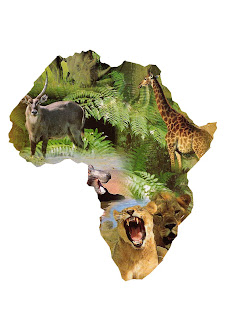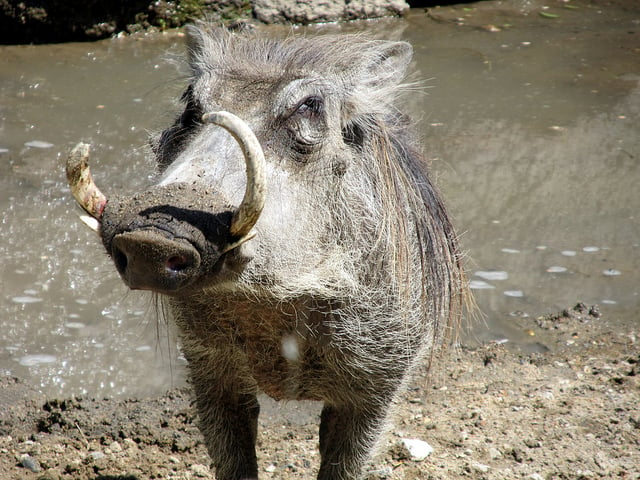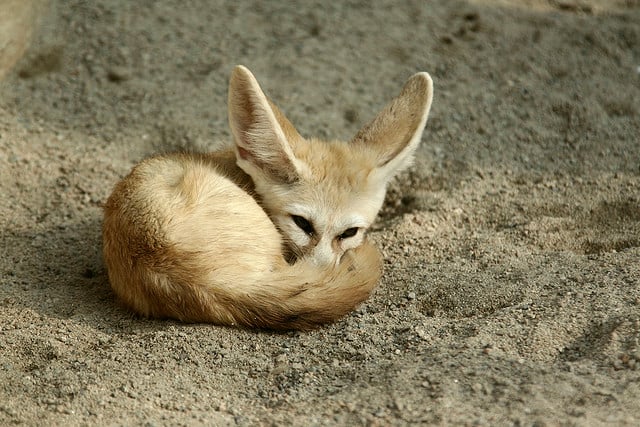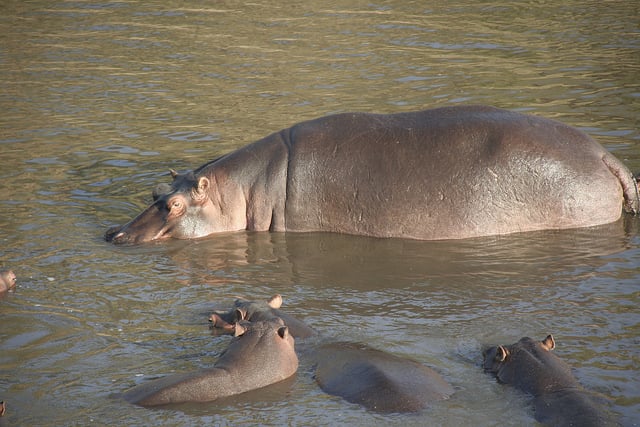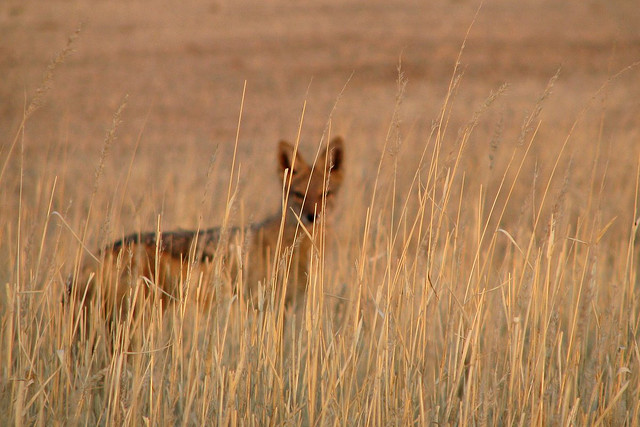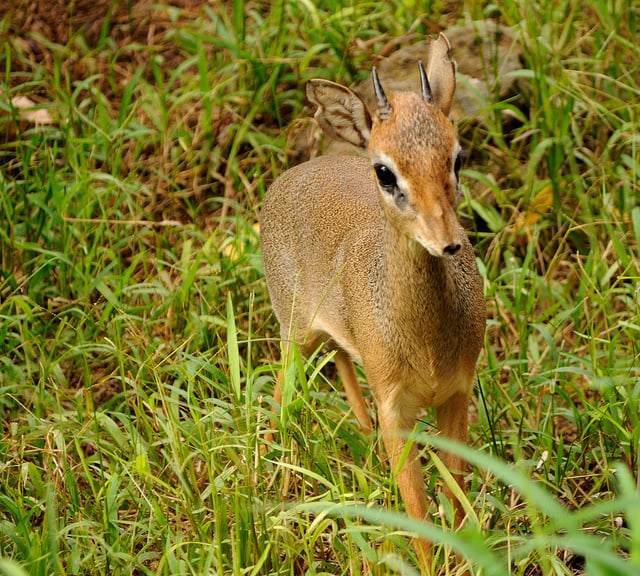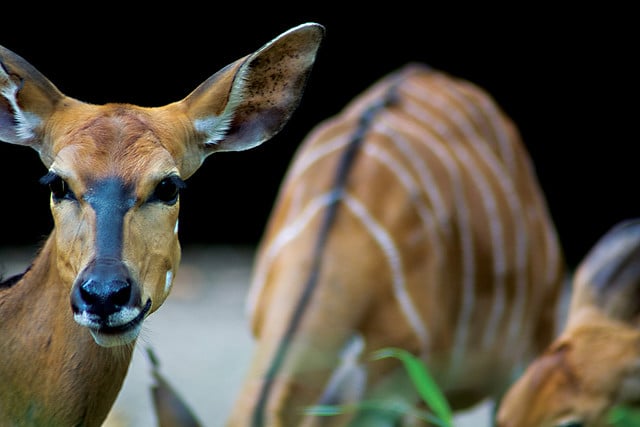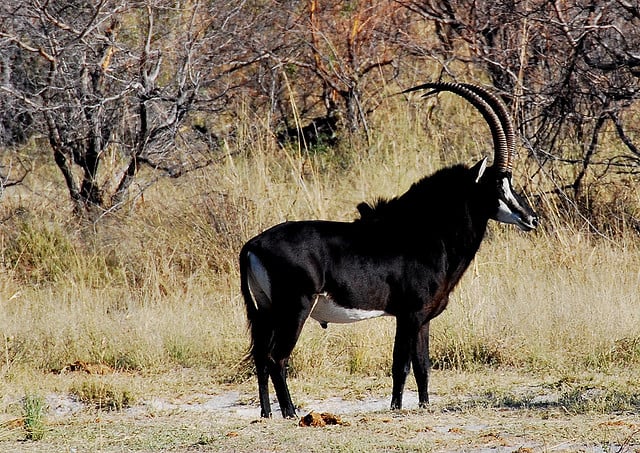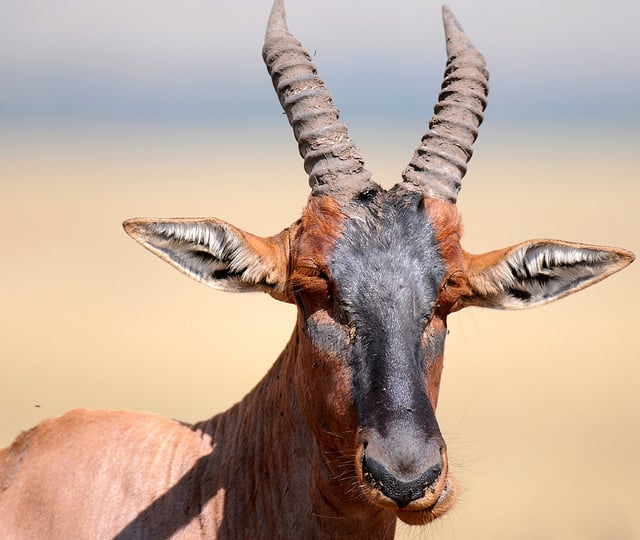
Got the gold bug? Golden animals are both beautiful and rare, much like the precious metal itself. These colorful insects, arachnids, vertebrates – and even one very special lady – are linked by a common bond: the warm, golden glow that gives them the look of exquisite, living treasures.
Golden Beetles

Certain types of beetles can appear so golden it’s hard to believe they haven’t somehow incorporated 24-carat gold into their gleaming shells! They haven’t – if they did, human treasure hunters would have long since driven them to extinction. Among the most golden of these “gold bugs” are the Golden Scarab Beetle and the Golden Tortoise Beetle.

These insects get their golden appearance using some pretty sophisticated science. The Golden Tortoise Beetle can adjust the moisture content between two layers of its wing covers, resulting in varying levels or golden iridescence as seen by the human eye.
 The Golden Scarab Beetle (Chrysina resplendens) goes even further: its chitinous cuticle reflects circularly polarized light which is “left-handed”. Sounds complicated; looks brilliant!
The Golden Scarab Beetle (Chrysina resplendens) goes even further: its chitinous cuticle reflects circularly polarized light which is “left-handed”. Sounds complicated; looks brilliant!Golden Jumping Spiders
 Jumping spiders are hunters and ambush predators rather than web-weavers so one would think having a gleaming, metallic exoskeleton would not be in their best interest. Possibly these spiders’ golden appearance is something only human eyes – and not those of its prey – can appreciate.
Jumping spiders are hunters and ambush predators rather than web-weavers so one would think having a gleaming, metallic exoskeleton would not be in their best interest. Possibly these spiders’ golden appearance is something only human eyes – and not those of its prey – can appreciate.
Jumping spiders are one of the most intelligent spider species and this 1/4-inch long iridescent gold example is one of the most striking in appearance. The rose petal upon which this jewel-like arachnid has set up his or her hunting grounds makes a pleasing contrast with the shimmering iridescent gold of the spider’s exoskeleton.
Golden Monarch Butterfly Chrysalis
 Monarch butterflies are known for their bold orange wings bisected with black veins and contrasting white spots. Their caterpillars, often found grazing on Milkweed plants, are striped with black, white and yellow. It’s only in this majestic creature’s intermediate stage that it chooses to flash its gold: the chrysalis. Oh, uhh, the dude in the chrysalis suit? Gold, pure (comedy) gold.
Monarch butterflies are known for their bold orange wings bisected with black veins and contrasting white spots. Their caterpillars, often found grazing on Milkweed plants, are striped with black, white and yellow. It’s only in this majestic creature’s intermediate stage that it chooses to flash its gold: the chrysalis. Oh, uhh, the dude in the chrysalis suit? Gold, pure (comedy) gold. A Monarch butterfly chrysalis is mainly emerald or jade green in color highlighted by bright metallic gold trim – a horizontal line about 1/3 of the way down and raised golden bumps set apart symmetrically on its lower portion. About 24 hours before the butterfly emerges from the chrysalis, the surface will darken and then turn transparent. Through this process and even after the butterfly has emerged, the golden stripe and spots remain.
A Monarch butterfly chrysalis is mainly emerald or jade green in color highlighted by bright metallic gold trim – a horizontal line about 1/3 of the way down and raised golden bumps set apart symmetrically on its lower portion. About 24 hours before the butterfly emerges from the chrysalis, the surface will darken and then turn transparent. Through this process and even after the butterfly has emerged, the golden stripe and spots remain.Golden Fish
 To quote the website copy describing this “truly unbelievable” golden fish, “This is an amazing creation of the Creator. Gold Fish, which was found in the sea in Taiwan was put to display in Taiwan’s Natural Museum.” Okie dokie, I have an open mind and I’m sure you do too… but then: “Scientists have found that some of the parts of this beautiful fish are of 24 carat pure gold.”That noise you heard? That was my mind snapping shut.
To quote the website copy describing this “truly unbelievable” golden fish, “This is an amazing creation of the Creator. Gold Fish, which was found in the sea in Taiwan was put to display in Taiwan’s Natural Museum.” Okie dokie, I have an open mind and I’m sure you do too… but then: “Scientists have found that some of the parts of this beautiful fish are of 24 carat pure gold.”That noise you heard? That was my mind snapping shut. Seems this particular goldfish, er, gold fish is an animatronic device that may have a creator; just not THE Creator. One can be sure, however, that Koi breeders are actively engaged in producing a truly believable golden ornamental carp. Such a fish might not have 24-carat gold parts but eager buyers would likely pay as if they were.
Seems this particular goldfish, er, gold fish is an animatronic device that may have a creator; just not THE Creator. One can be sure, however, that Koi breeders are actively engaged in producing a truly believable golden ornamental carp. Such a fish might not have 24-carat gold parts but eager buyers would likely pay as if they were.Golden Poison-Dart Frog
 There are several different species of Golden Poison Frogs including Phyllobates terribilis, said to be the world’s most poisonous vertebrate. Just how deadly are the alkaloid toxins exuded by these frogs through their skin? Just milligram of the frog’s Batrachotoxin poison is enough to kill approximately 10,000 mice, or 10 to 20 humans, or two African bull elephants – from 1/1,000th of a gram of poison! Another way of stating its toxicity is roughly 15,000 humans killed per gram. “Look but don’t touch” was never so appropriate.
There are several different species of Golden Poison Frogs including Phyllobates terribilis, said to be the world’s most poisonous vertebrate. Just how deadly are the alkaloid toxins exuded by these frogs through their skin? Just milligram of the frog’s Batrachotoxin poison is enough to kill approximately 10,000 mice, or 10 to 20 humans, or two African bull elephants – from 1/1,000th of a gram of poison! Another way of stating its toxicity is roughly 15,000 humans killed per gram. “Look but don’t touch” was never so appropriate. Golden Poison Frogs are not metallic gold in hue; in fact they can be pale green, various shades of yellow or even bright orange. Where you WILL see metallic gold on frogs (or toads) is in their eyes – the iris’ of many types of common frogs and toads displays a rich, brassy golden tone that contrasts with a midnight black background. Quite beautiful… some might even say, hypnotic.
Golden Poison Frogs are not metallic gold in hue; in fact they can be pale green, various shades of yellow or even bright orange. Where you WILL see metallic gold on frogs (or toads) is in their eyes – the iris’ of many types of common frogs and toads displays a rich, brassy golden tone that contrasts with a midnight black background. Quite beautiful… some might even say, hypnotic.Gold Tegu Lizard
 The Gold Tegu lizard is a large South American lizard that exploits a similar ecologic niche to that of monitor lizards on other continents. The Gold Tegu’s glossy skin and ornate gold over black striping combine to make it visually very appealing.
The Gold Tegu lizard is a large South American lizard that exploits a similar ecologic niche to that of monitor lizards on other continents. The Gold Tegu’s glossy skin and ornate gold over black striping combine to make it visually very appealing. Gold Tegu lizards are popular pets though their feisty nature and hard-to-tame aggressiveness makes them a real handful. Speaking of which, a Gold Tegu can grow rather large – up to 44″ long from tip of the nose to the end of their tails – and unlike other Tegu species they are mainly carnivorous.
Gold Tegu lizards are popular pets though their feisty nature and hard-to-tame aggressiveness makes them a real handful. Speaking of which, a Gold Tegu can grow rather large – up to 44″ long from tip of the nose to the end of their tails – and unlike other Tegu species they are mainly carnivorous.Golden Snakes
 Several different species of snakes have been graced with the prefix “golden”, including the Golden Tree Snake and the Golden Cat Snake. Most gold-toned snakes live in desert habitats where their coloration helps them blend in with the sandy ground and dry vegetation of arid climes.
Several different species of snakes have been graced with the prefix “golden”, including the Golden Tree Snake and the Golden Cat Snake. Most gold-toned snakes live in desert habitats where their coloration helps them blend in with the sandy ground and dry vegetation of arid climes. Now here’s one “rattler” that one wouldn’t mind having coiled close by – it’s one way to un-constrict your finances, at least. I’d say the gilded serpent above was both real and available but then… I’d be speaking with a forked tongue.
Now here’s one “rattler” that one wouldn’t mind having coiled close by – it’s one way to un-constrict your finances, at least. I’d say the gilded serpent above was both real and available but then… I’d be speaking with a forked tongue.Golden Marmoset
 The Golden Marmoset, or Golden Lion Tamarin (Leontopithecus rosalia), is one of the smallest monkeys and also one of the most endangered. It’s estimated only about 1,000 of these primates survive in forested areas of Brazil’s Atlantic coast while another 490 are currently kept in captivity or on protected reserves. It’s estimated that 98 percent of the Golden Marmoset’s original lush rainforest habitat has been destroyed through logging and/or agriculture.
The Golden Marmoset, or Golden Lion Tamarin (Leontopithecus rosalia), is one of the smallest monkeys and also one of the most endangered. It’s estimated only about 1,000 of these primates survive in forested areas of Brazil’s Atlantic coast while another 490 are currently kept in captivity or on protected reserves. It’s estimated that 98 percent of the Golden Marmoset’s original lush rainforest habitat has been destroyed through logging and/or agriculture. The thick, golden fur covering the Golden Marmoset makes it appear larger and heaver than it really is. In actual fact, these New World monkeys only grow up to 13.2 inches (335mm) long and can weight up to 25 ounces (about 700 grams) when fully grown.
The thick, golden fur covering the Golden Marmoset makes it appear larger and heaver than it really is. In actual fact, these New World monkeys only grow up to 13.2 inches (335mm) long and can weight up to 25 ounces (about 700 grams) when fully grown.Golden Weaver Bird
 The African Golden Weaver (Ploceus subaureus) can be found in eastern and southern Africa roughly from Kenya down to South Africa. These birds can form flocks of many thousands and their teardrop-shaped nests may hang from leaf-stripped savannah trees by the dozens.
The African Golden Weaver (Ploceus subaureus) can be found in eastern and southern Africa roughly from Kenya down to South Africa. These birds can form flocks of many thousands and their teardrop-shaped nests may hang from leaf-stripped savannah trees by the dozens. Golden Weaver Birds are not considered to be threatened and indeed, one of their relatives (the Red-billed Quelea) is considered to be the world’s most abundant bird with a population of approximately 1.5 billion. All Weavers are seed-eaters, and flocks sometimes cause African farmers problems when they settle en masse to gorge themselves on mature seed crops.
Golden Weaver Birds are not considered to be threatened and indeed, one of their relatives (the Red-billed Quelea) is considered to be the world’s most abundant bird with a population of approximately 1.5 billion. All Weavers are seed-eaters, and flocks sometimes cause African farmers problems when they settle en masse to gorge themselves on mature seed crops.Golden Bond Girl
 Our last (but not least) golden creature is of the species Homo Sapien, commonly known as Shirley Eaton, Bond Girl. Eaton played the role of Jill Masterson in the 1964 James Bond film Goldfinger. Her claim to fame was her on-screen demise, considered by movie pundits to be one of the top ten film deaths. The crucial scene features Eaton sprawled nude on a bed, her body completely covered in gold. Betty White’s cool and all, but Shirley Eaton is one hot Golden Girl! Here’s a video clip of the notorious (for 1964) scene:
Our last (but not least) golden creature is of the species Homo Sapien, commonly known as Shirley Eaton, Bond Girl. Eaton played the role of Jill Masterson in the 1964 James Bond film Goldfinger. Her claim to fame was her on-screen demise, considered by movie pundits to be one of the top ten film deaths. The crucial scene features Eaton sprawled nude on a bed, her body completely covered in gold. Betty White’s cool and all, but Shirley Eaton is one hot Golden Girl! Here’s a video clip of the notorious (for 1964) scene:
The Jill Masterson character supposedly died from “skin suffocation”, a questionable proposition that incidentally was investigated in a memorable episode of the Mythbusters television series. Shirley Eaton was said to suffer no ill effects from her movie makeup though the film’s producers kept a doctor on hand while filming “just in case”. As for Mythbuster’s Adam Savage, his head to toe gold painting also left him none the worse for wear though his pride was somewhat dented.
 All that glitters isn’t always gold and what appears to be gold may or may not glitter – then again, animals are animate objects and their golden garb has value much more than that of the metal that has enticed, entranced and blinded humans from time immemorial.
All that glitters isn’t always gold and what appears to be gold may or may not glitter – then again, animals are animate objects and their golden garb has value much more than that of the metal that has enticed, entranced and blinded humans from time immemorial.











